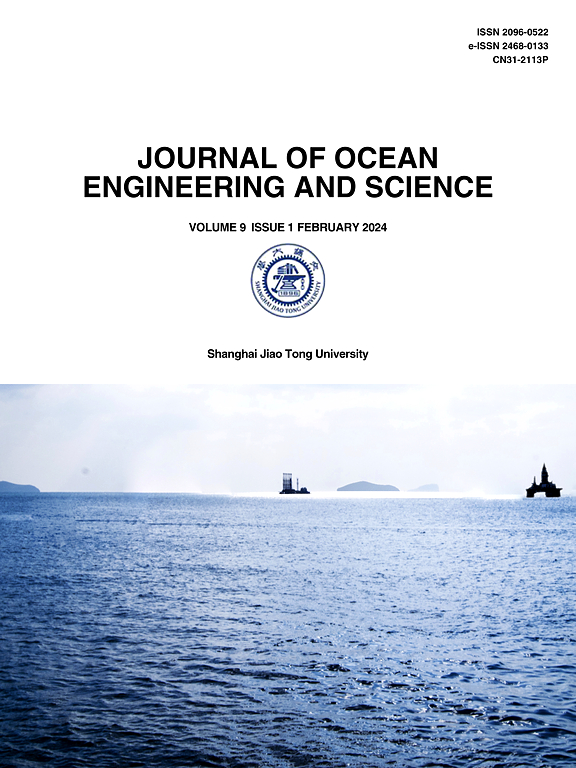自由曲面格林函数快速逼近的机器学习模型及其应用
IF 11.8
1区 工程技术
Q1 ENGINEERING, MARINE
引用次数: 0
摘要
在势流理论中,准确有效地计算自由面格林函数对于解决流体动力学问题至关重要。鉴于机器学习方法在非线性函数拟合中的出色表现,本研究利用一种称为StripeGF的有效机器学习模型进行数值逼近。在该模型中,在远离奇异点的计算域内布置等距离的水平基准线,并使用单输入的多层感知器(MLP)拟合格林函数及其在每条基准线上的导数。在满足一阶常微分方程(ODE)的基础上,利用四阶龙格-库塔法求解格林函数及其邻线导数。在接近奇异点的区域,采用双输入MLP。使用Romberg正交建立双精度数据集进行训练和验证,数值结果表明,StripeGF在效率方面优于所有4种比较方法,并且在所有区域的准确率均超过99.9%。StripeGF改进的边界元程序在S175的水动力计算中得到了验证,显示出良好的精度和可靠性。本文章由计算机程序翻译,如有差异,请以英文原文为准。
A machine learning model for fast approximation of free-surface Green's function and its application
In potential flow theory, the accurate and efficient calculation of free-surface Green's functions is essential for solving hydrodynamic issues. Given the impressive performance of machine learning methods in nonlinear function fitting, the present study utilizes an effective machine learning model called StripeGF for numerical approximation. In this model, equidistant horizontal datum lines are arranged in the computational domain away from the singularity, and Green's function and its derivatives on each line are fitted by a multi-layer perceptron (MLP) with a single input. Based on the first-order ordinary differential equation (ODE) that they satisfy, the fourth-order Runge-Kutta method is used to solve the Green's function and its derivatives between adjacent lines. In the domain nearing the singularity, a double-input MLP is applied. Use the Romberg quadrature to create a double-precision data set for training and validation, the numerical results demonstrate that StripeGF outperforms all 4 comparison methods in terms of efficiency and has accuracy of at least 4 digits in more than 99.9% of all zones. The boundary element program improved by StripeGF is verified in the hydrodynamic calculation of S175, showing good accuracy and reliability.
求助全文
通过发布文献求助,成功后即可免费获取论文全文。
去求助
来源期刊

Journal of Ocean Engineering and Science
Multiple-
CiteScore
11.50
自引率
19.70%
发文量
224
审稿时长
29 days
期刊介绍:
The Journal of Ocean Engineering and Science (JOES) serves as a platform for disseminating original research and advancements in the realm of ocean engineering and science.
JOES encourages the submission of papers covering various aspects of ocean engineering and science.
 求助内容:
求助内容: 应助结果提醒方式:
应助结果提醒方式:


